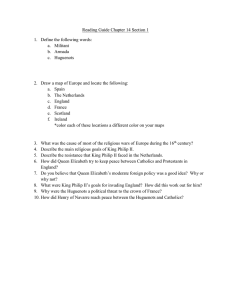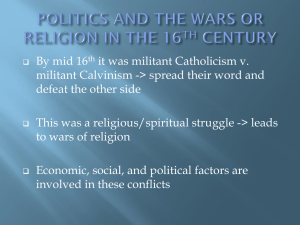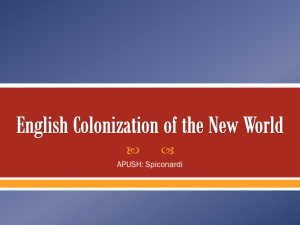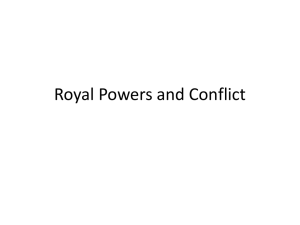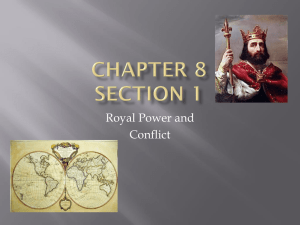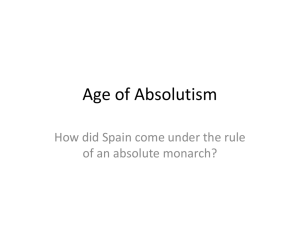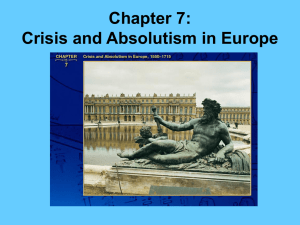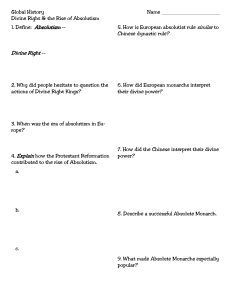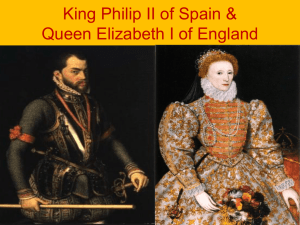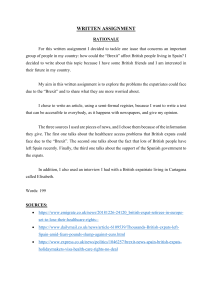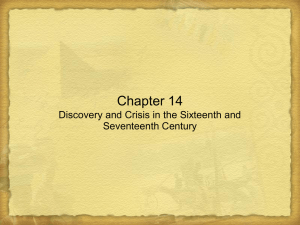Slide 1 - USD 292
advertisement
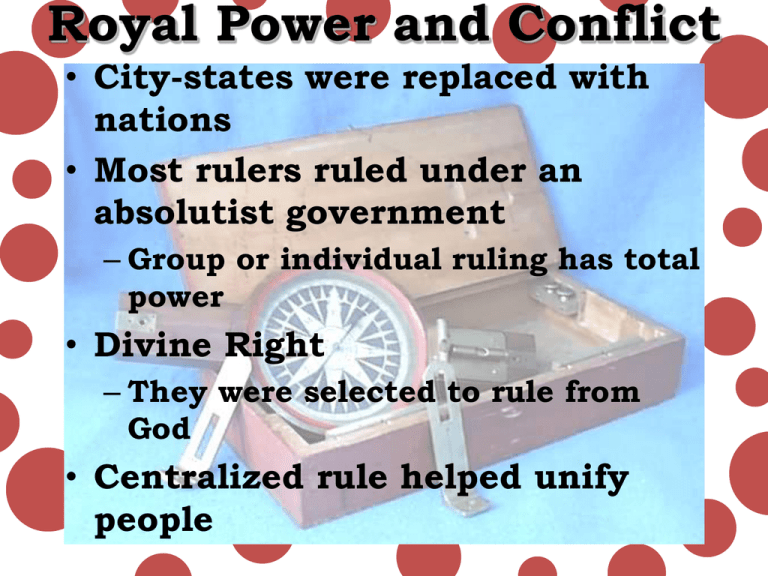
Royal Power and Conflict • City-states were replaced with nations • Most rulers ruled under an absolutist government – Group or individual ruling has total power • Divine Right – They were selected to rule from God • Centralized rule helped unify people Spain: Philip II • Ruled from 1556–1598 • Goal was to spread Catholicism – Got Spain involved in several wars • Unrest – Ferdinand and Isabella unified Spain • Failed to unify laws – Philip II made Madrid the capital • Religious Policy – Supported inquisition – Dutch Protestants rebelled • England helped them win independence Spain: Philip II • Spanish Armada – Phillip supported Elizabeth I until she aided the Dutch – Decided to invade England • 1588 sent Armada to England • England sunk the Armada • Last of the Hapsburgs – Philip II’s decedents were ill-equipped to handle problems England: Tudors • Henry VII – fist Tudor king – Rebuilt English commercial prosperity • Henry VIII – Fought wars, made England a great naval power – Had six marriages • Edward VI – 9 when he became king, and he died shortly • Mary I – Became queen, brought back Catholicism England: Elizabeth I • Her reign was a great cultural period – Theater flourished • Refused to marry – Didn’t want to give up her powers • Government – Passed legislation – Justices of the Peace enforced the laws England: Elizabeth I • Social and Economic Policy – Three classes • Queen and her court • Gentry, merchants, lawyers, and clergy • Yeomen – Laws regulated the lives of people – Elizabeth tried to get the monarchy out of debt • Costs of war, mounting inflation England: Elizabeth I • Foreign Policy – Continued to build a strong navy – Fought to maintain a balance of power • Keep any one nation from becoming too powerful – Sought to make Scotland and Ireland an ally • So they could not ally with the Spanish
